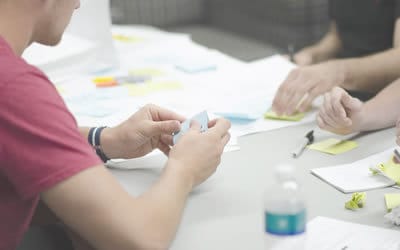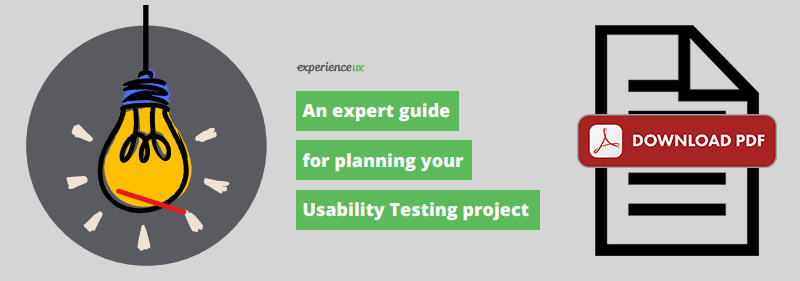Sometimes questions are more important than answers
What are focus groups?
Focus groups are a research method used to gather feedback and opinions from customers. Each person in the group is encouraged to participate in a discussion which is pre-planned by a researcher and is guided by a facilitator. Focus groups are typically used to gauge opinion and gather information from users about products, services, and features before they have been developed.

Focus groups are facilitated discussions
A focus group is a moderated discussion group of anywhere from 6 to 10 participants. Each participant is chosen after filling in a screener questionnaire, which allows the researcher to ensure a good mix of people represents the target audience for the project. Before running a focus group, the facilitator will design a discussion guide to ensure the participants cover topics which are of interest to the researchers. Typically, a focus group will last around an hour and a half and will sometimes be observed by researchers and members of a wider project team using a one-way mirror.
What are the aims? When or why is it used?
Focus groups are used in traditional market research to gather target audience opinions and attitudes about certain products, services or concepts. A company may use a focus group to gather customer feedback on a new product or service before they decide to take the concept into development. In this context, a focus group can be used to test out ideas and gather opinion on whether the idea will be liked or needed by the target audience.
Focus groups are fairly widespread and appear to be an accepted form of research for many organisations. They can be used early in the product lifecycle to explore options and formulate new ideas, or they can be used later in the process to validate concepts and even choose between prototypes and different designs before launch.
Focus groups require an experienced moderator to guide discussions and to encourage participants to get involved. Moderators need to be skilled in managing and guiding a group without influencing the course of a discussion too much. At times the moderator will need to introduce projective techniques and role-play into a session to uncover deeper attitudes and opinions.
Advantages of focus groups
Focus groups provide a valuable method to gather customer feedback and opinion on different ideas and concepts. The format of a focus group session can be replicated to some extent and can therefore be taken around various geographical regions to provide high numbers of participants and a good spread of demographics. When sessions are observed by members of a client organisation, a focus group can provide invaluable insight into who their audience really is.
Disadvantages of focus groups
Focus groups have come under some criticism for their inability to remove the potential for ‘group think’ where some participants will be swayed by the opinions of other more dominant members and feel under pressure to conform. In our research, we have often found that what people say they do is often very different from what people actually do, therefore reliance upon focus groups alone can be misleading when trying to uncover true customer behaviour.
Conclusion
Focus groups provide researchers with a useful tool to generate customer feedback throughout the product lifecycle. Traditionally, market researchers have turned to focus groups for a large proportion of their research projects and have led to the method being widely used throughout the research community. It is easy to see how it has become so popular because it offers a versatile method of gathering customer feedback at almost any stage of a project and allows for the client team to observe each session.
However, the use of focus groups must be evaluated carefully as they can fall short of providing the deeper understanding for customer behaviour that many organisations may seek, which may be suited to alternative one-to-one methods such as usability testing, and customer experience research.
You may also like
Our UX research contains these core features

Tailored User Tests
Work closely with our team to design your test.

Natural User Journeys
We focus on natural user behaviour & journeys.

Competitor Evaluation
See how users react to your site vs. competitors.

Multi-platform UX
UX insight into each of your core platforms.
More UX Methods Questions
Usability testing is a way to see how easy to use something is by testing it with real users. Users are asked to complete tasks, typically while they are being observed by a researcher, to see where they encounter problems and experience confusion. If more people encounter similar problems, recommendations will be made to overcome these usability issues.
User-centred design is a process or set of tools used to design a service which focuses on what users need at the very beginning and continues throughout development until launch. Typically services are designed from a technical and business perspective, with consideration for users added in later. Instead, User-centred design ensures the service focuses on what users need before balancing this with the technical and business requirements.
Wireframing is a way to design a website service at the structural level. A wireframe is commonly used to lay out content and functionality on a page which takes into account user needs and user journeys. Wireframes are used early in the development process to establish the basic structure of a page before visual design and content is added.
Website prototypes are interactive demos of a website. These are often used to gather feedback from project stakeholders early in the project lifecycle, before the project goes into final development
User requirements capture is a process used to understand what typical users will need from a service which is about to be designed. Users are observed using similar services and interviewed about the ways they go about planning and completing their goals. This information is used to identify a list of content, features and functionality the new service must have in order to satisfy the needs of its users.
Customer profiling is a way to create a portrait of your customers to help you make design decisions concerning your service. Your customers are broken down into groups of customers sharing similar goals and characteristics and each group is given a representative with a photo, a name, and a description.
Card sorting is a technique that involves asking users to organise information into logical groups. Users are given a series of labelled cards and asked to organise and sort them into groups that they think are appropriate. Card sorting helps you to design an information architecture, workflow, menu structure or website navigation paths.
A user journey is a path a user may take to reach their goal when using a particular website. User journeys are used in designing websites to identify the different ways to enable the user to achieve their goal as quickly and easily as possible.
Focus groups are a research method used to gather feedback and opinions from customers. Each person in the group is encouraged to participate in a discussion which is pre-planned by a researcher and is guided by a facilitator. Focus groups are typically used to gauge opinion and gather information from users about products, services, and features before they have been developed.
Remote usability testing is a way to test how easy to use a website is with users who are in a different geographical location. Traditional usability testing brings users and researchers together in one place to conduct the test, whereas remote usability testing allows the researcher and user to be in different locations while the test is completed.
An expert review is where a usability expert uses his/her knowledge and experience of testing websites with users to walk through a website in the shoes of a typical user. The expert will spot problems and recommend changes to improve usability when budgets and timescales don’t allow for user research.
Service design makes a service easier to use, more useful and more desirable for the customers who need to use it: the service user. Whether creating an entirely new service or improving an existing one, service design focuses on what customers really need at each stage of their interaction with an organisation.
Ethnography is a study through direct observation of users in their natural environment rather than in a lab. The objective of this type of research is to gain insights into how users interact with things in their natural environment.
Tree testing is a way of evaluating a proposed site structure by asking users to find items based on the sites organisation and terminology. This online test only displays the navigation links and removes any additional clutter.
Find Out More
Let’s Chat
If you’re ready to introduce the innate power of human centeredness to your products, services and brand, drop me an email today.
01202 293652 alicarmichael@experienceux.co.uk

